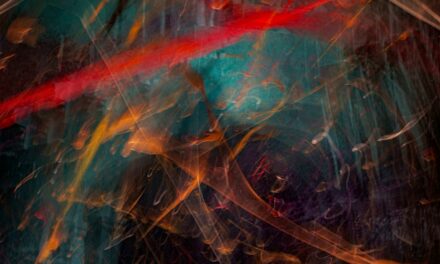Water reflections are a captivating phenomenon that has intrigued artists for centuries. At their core, reflections occur when light interacts with a surface, creating a mirrored image of the objects above or around the water. This interplay of light and surface tension is not merely a visual effect; it is a complex relationship that can convey mood, depth, and atmosphere in a painting.
To truly grasp the essence of water reflections, one must consider the properties of water itself. The surface can be smooth and glassy, reflecting images with clarity, or it can be rippled and disturbed, creating a more abstract representation of the world above. Understanding the physics behind reflections is essential for any artist wishing to depict water accurately.
When light strikes the surface of the water, it can either be absorbed or reflected, depending on the angle and the texture of the surface. A calm lake at dawn may present a perfect mirror image of the surrounding landscape, while a babbling brook may distort those same images into a series of fragmented shapes. This variability offers artists a rich palette of possibilities, allowing them to explore different moods and atmospheres through their work.
By observing how light interacts with water in various conditions, artists can develop a deeper appreciation for the subtleties involved in capturing these reflections on canvas.
Summary
- Understanding the angle of incidence and reflection is crucial for creating realistic water reflections
- Use a smooth, horizontal brushstroke to mimic the stillness of water when painting reflections
- To capture the movement of rivers and streams, use quick, fluid brushstrokes and vary the direction of your strokes
- Choose colours that are slightly darker and cooler than the object being reflected for a more realistic effect
- Adding ripples, shadows, and highlights can create depth and dimension in water reflections
Techniques for Painting Still Water Reflections
When it comes to painting still water reflections, several techniques can help artists achieve a realistic and compelling effect. One fundamental approach is to begin with a solid understanding of the composition. Artists should first sketch out the scene, paying close attention to the placement of objects that will be reflected in the water.
This initial step is crucial, as it sets the foundation for how reflections will be rendered later on. The key is to ensure that the proportions and angles of the reflected images align with their real-world counterparts. Once the composition is established, artists can begin layering their paint to create depth and texture.
A common technique involves starting with a base layer that captures the overall colour of the water, followed by subsequent layers that introduce highlights and shadows. For instance, using a flat brush to apply horizontal strokes can mimic the gentle ripples on the water’s surface, while a finer brush can be employed to add details such as the reflections of trees or clouds. The use of glazing techniques—applying thin layers of transparent paint—can also enhance luminosity and create a sense of depth in the water, allowing for a more dynamic representation of stillness.
Tips for Capturing the Movement of Rivers and Streams
Capturing the movement of rivers and streams presents its own unique challenges and opportunities for artists. Unlike still water, flowing bodies exhibit dynamic patterns that require a different approach to painting. One effective method is to study the movement closely before putting brush to canvas.
Observing how water flows over rocks, bends around obstacles, and creates eddies can provide valuable insights into how to depict these movements accurately.
When painting moving water, it is essential to convey both motion and energy.
This can be achieved through brushwork that mimics the flow of water. Using long, sweeping strokes can suggest rapid movement, while shorter, choppy strokes may indicate turbulence or splashes. Additionally, incorporating varying shades of blue and green can help illustrate depth and speed; darker hues can suggest deeper areas of water, while lighter tones can represent shallower sections or highlights where light hits the surface.
By combining these techniques with an understanding of water dynamics, artists can create compelling representations of rivers and streams that resonate with viewers.
Choosing the Right Colors for Realistic Water Reflections
The choice of colour is paramount when it comes to painting realistic water reflections. Water is not merely blue; its colour is influenced by various factors such as lighting conditions, surrounding landscapes, and even atmospheric elements like fog or haze. Artists should consider these variables when selecting their palette.
For instance, during sunrise or sunset, warm hues such as oranges and pinks may dominate the reflection, while midday scenes might lean towards cooler blues and greens. To achieve realism in water reflections, artists should also pay attention to how colours interact with one another. The principle of complementary colours can be particularly useful; for example, if a tree casts a green reflection in the water, incorporating hints of red or orange in nearby areas can create visual interest and balance.
Additionally, using transparent glazes can allow underlying colours to show through, adding complexity and richness to the final piece. By thoughtfully selecting colours that reflect both the environment and the mood of the scene, artists can elevate their depictions of water reflections to new heights.
Creating Depth and Dimension in Water Reflections
Creating depth and dimension in water reflections is essential for achieving a lifelike representation that draws viewers into the scene. One effective technique is to layer colours strategically to build up richness and complexity. Starting with darker tones at the bottom of the reflection can create an illusion of depth, while gradually introducing lighter shades towards the top can simulate how light interacts with the water’s surface.
This gradient effect not only adds dimension but also enhances the overall realism of the painting. Another way to convey depth is through careful attention to detail in both the reflected objects and their surroundings. Artists should consider how elements such as trees or buildings are distorted by the water’s surface; this distortion can add an intriguing layer of complexity to the reflection.
Incorporating subtle variations in colour and texture within these reflections can further enhance depth. For instance, using softer edges for distant objects while maintaining sharper details for those closer to the viewer can create a sense of spatial hierarchy within the composition.
Utilizing Masking Fluid for Crisp Reflections
Application and Drying
To effectively use masking fluid, it is essential to apply it carefully with a fine brush or applicator tip. Once applied, artists should allow it to dry completely before proceeding with their painting process.
Revealing Highlights
After completing the desired layers around the masked areas, removing the masking fluid reveals pristine white spaces that mimic highlights on the water’s surface.
Enhancing Realism and Saving Time
This technique not only enhances realism but also saves time by eliminating the need for meticulous touch-ups later on.
Adding Details to Enhance Water Reflections
Details play a crucial role in enhancing water reflections and bringing them to life on canvas. While capturing broad shapes and colours is important, it is often the finer details that elevate a painting from ordinary to extraordinary. Artists should consider incorporating elements such as ripples, waves, or even small debris floating on the surface to add interest and realism to their work.
One effective method for adding details is through layering techniques. After establishing the base colours and shapes of reflections, artists can use smaller brushes or even palette knives to introduce intricate textures and highlights. For instance, tiny strokes of white or pale blue can suggest glimmers of light dancing on the water’s surface, while darker lines may indicate shadows cast by nearby objects.
By carefully observing real-life examples and translating those observations into their work, artists can create vibrant and engaging reflections that resonate with viewers.
Troubleshooting Common Challenges in Painting Water Reflections
Despite careful planning and execution, artists may encounter challenges when painting water reflections. One common issue is achieving balance between realism and artistic interpretation; sometimes reflections may appear too stark or overly simplified compared to their real-life counterparts. To address this challenge, artists should continually refer back to their reference materials or even step away from their work periodically to gain fresh perspective.
Another frequent hurdle is managing colour harmony within reflections. If colours appear muddied or disjointed, artists may need to reassess their palette choices or consider adjusting their layering techniques. Experimenting with glazing or scumbling can help unify disparate elements within a reflection while maintaining transparency and luminosity.
Ultimately, patience and practice are key; by embracing challenges as opportunities for growth, artists can refine their skills in capturing the enchanting beauty of water reflections on canvas. In conclusion, painting water reflections requires a blend of technical skill, keen observation, and an understanding of light and colour dynamics. By mastering various techniques—from capturing stillness in calm waters to depicting movement in rivers—artists can create compelling representations that resonate with viewers on multiple levels.
With practice and dedication, anyone can learn to harness the beauty of water reflections in their artwork, transforming simple scenes into captivating visual narratives that celebrate nature’s artistry.


